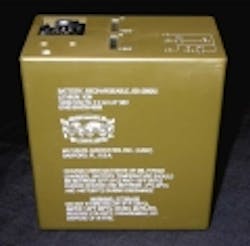Shutterless thermal camera engine for missile warning, surveillance, and perimeter security introduced by Premier Electronics
HODDESDON, England, 25 May 2010. Premier Electronics Ltd. in Hoddesdon, England, is introducing the COMPACT EYE OEM shutterless camera engine to enable infrared cameras to operate continuously without a mechanical shutter for non uniformity correction for missile guidance, missile warning, military surveillance, perimeter security, predictive maintenance, and fire detection.
The engine is tuned to longwave infrared, 8 to 14 microns, with less than 0.060 degrees Celsius sensitivity. The unit is available with or without non-uniformity-correction shutter or as an open frame camera.
By eliminating the need for a shutter, these thermal camera engines are constantly open, experiencing no image freezes. Shutterless engines also are small, light-weight, operate silently, have fast start up time, consume little power, and possess a lower current draw.
It includes algorithms for poor visibility, and has built-in anti-blooming system to prevent image flare. Electronic zoom of x2 and x4 enables close up images of areas of interest; user can define the ROI. A high resolution graphics overlay enables user to add has to the screen display.
Features are controlled via an on screen display. The imager can store up to 50 snap shot images for further analysis at a later time. The camera offers standard video outputs but can be supplied with a digital interface via the USB or LVDS interfaces. An optional remote focus and field of view can be controlled via the communications interface.
For more information contact Premier Electronics online at www.premierelect.com.
